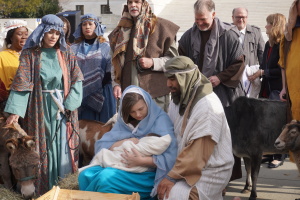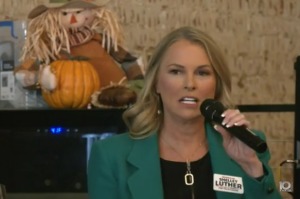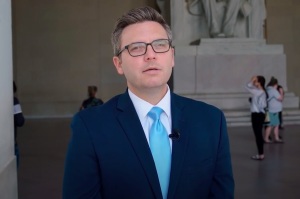Vatican Launches 'Universe' Exhibit in Galileo's Hometown
The Vatican announced that it will be co-hosting a major science exhibition in Pisa, Italy, the hometown of astronomer Galileo Galilei, who four centuries ago was branded a heretic by the Church.
The project, which is being organized by Italy's National Institute of Nuclear Physics, the Physics Department of Pisa University and the Vatican Observatory, is called "Stories from Another World. The Universe Inside and Outside of Us."
The "stories" will be based on scientific findings and will examine how the physical universe developed. Some of the interesting objects on display will be original copies of books by Sir Isaac Newton and rock fragments from the moon and Mars, our closest planetary neighbor, The Washington Post shared.
"The exhibition seeks to show how mankind has gradually learned over the ages to explore and learn more about the universe that surrounds us, a universe that is infinitely larger than was once thought," a statement by the Vatican Radio reads.
Galileo Galilei, one of Pisa's most famous natives, was not only an astronomer, but a physicist and a philosopher. The Italian, who suggested that the Earth revolves around the sun, and not the other way around, was branded a heretic and condemned by the Vatican in 1633, who back then contended that our planet (and man, as created by God) was the center of the universe.
The astronomer spent the last eight years of his life under house arrest because of his theories and it was not until 1992 that Pope John Paul II apologized for the Catholic Church's actions.
The placement of the Vatican's science exhibit in Pisa may have been intentional - Cosimo Bracci Torsi, president of Palazzo Blu Foundation, the exhibit's venue, expressed that the event reflects the progress made between secular science and religion, The Washington Post revealed.
"(The exhibition tells) the history of the universe, from the particles which make up the atoms in our bodies to distant galaxies," the director of the Vatican Observatory, Rev. Jose Funes, shared with reporters.
The aim of the project is to encourage young people to take up an interest in science, and according to Funes, the complex and difficult information collected by space study and exploration efforts will be made as accessible as possible without making it over simplistic and superficial.
The "Stories from Another World. The Universe Inside and Outside of Us" exhibit is scheduled to run from March 10 to July 1.
The Vatican has been increasing its involvement in scientific endeavors in recent times and has been embracing a host of pursuits previously considered questionable.
Back in November, it sponsored a three-day conference, which analyzed the scientific and ethical implications of using adult stem cells to cure diseases.
"Adult Stem Cells: Science and the Future of Man and Culture" was hosted by The Pontifical Council and U.S. biotech company, NeoStem.
The conference brought together theologians, physicians and philosophers, along with people who have been treated with stem cells. The Vatican expressed that its mission was to find companies willing to focus on methods of stem cell extraction that would not destroy human embryos, such as embryonic stem cell research, which it is still firmly opposed to.
And earlier this year, Pope Benedict XVI launched a new initiative, called the 'The Science and Faith Foundation', which will be headquartered in Vatican City and will be aimed at building a "philosophical bridge" between science and theology.
"I don't think most people necessarily see science and faith as being opposed but I do think there is confusion as to where to put faith and where to put science in their life," Father Tomasz Trafny, Executive director of the Foundation told the Catholic News Agency on Jan 19.
"So the question for us is how to offer a coherent vision of society, culture and the human being to people who would like to understand where to put these dimensions – the spiritual and religious and the scientific," he commented.




























